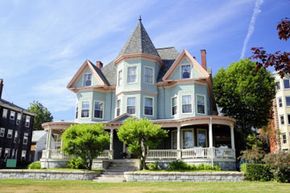You're interested in purchasing property, but not just any property -- you want something historic. However, buying a historic property is a little different from buying regular property. Before you start shopping, there are some special considerations to keep in mind.
Basically, there are two stages at which you can get into historic property: before or after it's been designated. So your first step when looking at a building that you, the owner, the appraiser, your real estate agent or the seller's agent believes is or might be "historic" is to check the National Register of Historic Places (NRHP). Is it listed? If not, there's still a chance that your prospective property is historic. That is, while it may not be individually listed in the NRHP, it might be included in a historic district. The advanced search feature at the NRHP allows you to search historic districts [source: National Park Service].
Advertisement
Finally, was your house built before 1936? If so, there's wiggle room in which the current (or a previous) owner may have worked with a local or state agency to gain some of the benefits due a historic property without officially listing it at the NRHP. When in doubt, check with your local historic preservation office. They should either know of any applications or designations, or be able to point you toward local resources that can say definitively whether the property in question has been down the historic path. The National Park Service Web site offers quick links to state historic preservation offices, and from these state offices, you can easily find contact information for many local preservation societies [source: National Park Service].
So now you know whether you're officially dealing with a historic property. If you are, what are some of the benefits and downsides that you'll have to contend with? Keep reading to find out.
Advertisement


